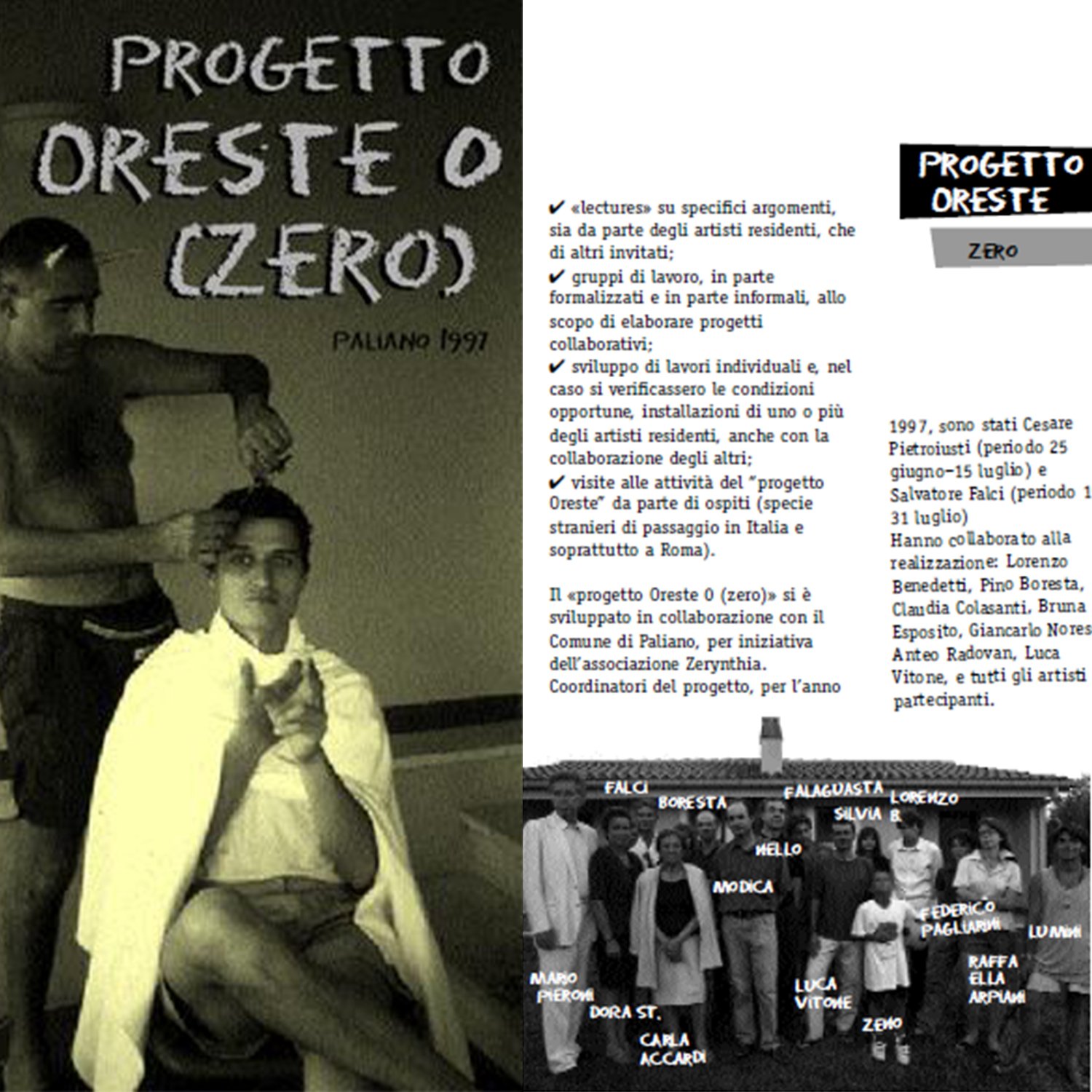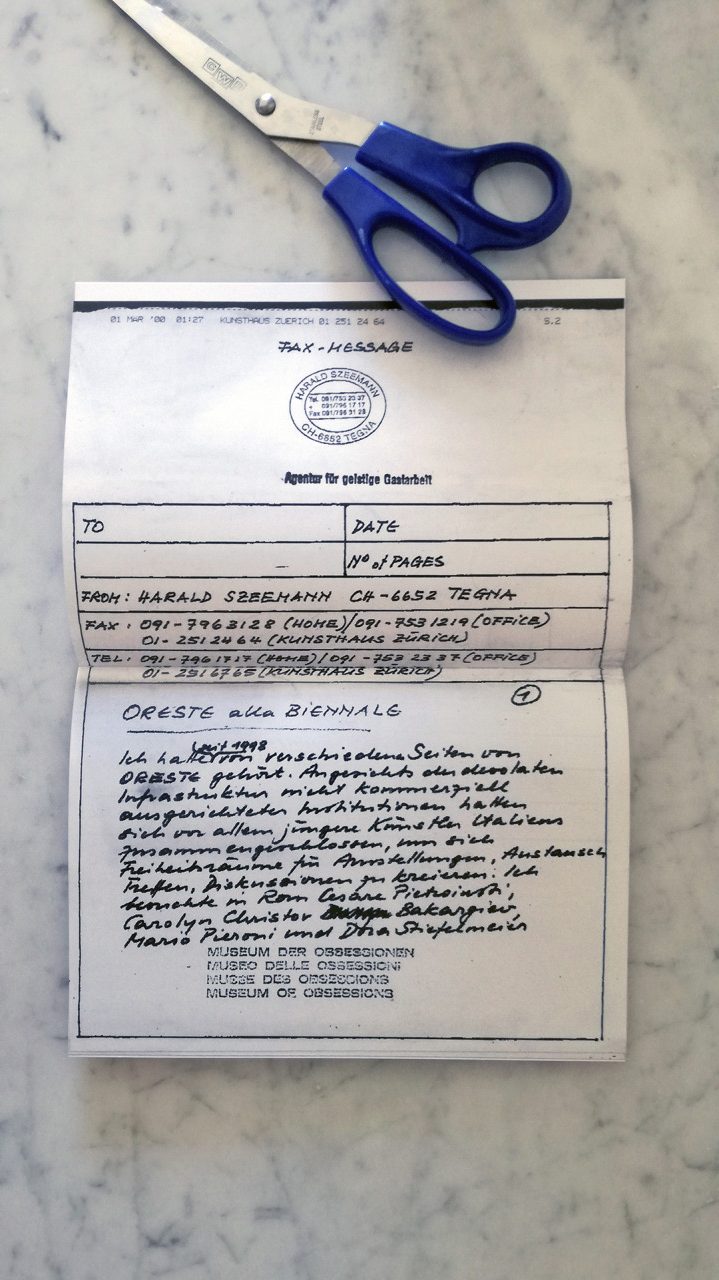“Oreste is no one, and yet it is also many. Oreste, as it is known by friends, or Project Oreste by everyone else, was created in 1997 an ended in 2001.” These the words used by Serena Carbone, the curator, on the day of the exhibit No! Oreste, No!, hosted at the MAMbo Project Room in the spring of 2019, which retraced the history of the project itself through numerous and heterogenous archived materials.
Who or what was Oreste? It all began in the first months of 1997. Cesare Pietroiusti asked a group of artists to gather at an osteria to have lunch together, to tell them about the opportunity of creating an artist summer residence in a guest house in Paliano, that was being made available by the then mayor Giuseppe Alveti.

Project Oreste
In an interview with Artribune, on the opening day of the MAMbo exhibition, the artist Pino Boresta remembers the excitement of the moment and the immediate search for the selection criteria of the artists to invite. Those present soon came to a conclusion: the invitations were to be based on the artistic and intellectual interests that each chosen candidate could bring, in a certain historical moment in time and of a certain type of research, which were especially close to relational art.
In this laboratory, in constant evolution between 1997 and 2001, nearly 300 artists participated, including Cesare Pietroiusti, Pino Boresta, Luigi Negro, Emilio Fantin, Eva Marisaldi, Stefano Arienti, Giancarlo Norese, Carla Accardi, Luca Vitone, Bruna Esposito.

Ph. Credits: Pino Boresta
The Oreste experience was much more than an artist residence. It was a revolutionary project, which opened doors to new visions of art – independent, collective, based on relationships, gatherings, meetings and debates.
Considered as one of the main projects in Italy of relational art, Oreste was a free initiative, based entirely on exchange, sharing of ideas and active participation. It went against the rules and imagined new scenarios, new alternatives to the system,. It placed the role of the artist and his autonomy at the centre of attention, questioning the meaning of “making art” and the contexts assigned to it. It wondered if there really was an “art audience”, and what importance it gave the work of art and the artist.
Oreste’s journey starts with Oreste O from the guesthouse in Paliano, in the province of Frosinone. In the same year it comes to Bologna via a conference organised at the Link community centre, entitled How to tell my mother that what I do means something. The artists participating in the project worked actively together, aiming to make room for all ideas. During their meetings they talk not only about art, but also (for example) about music, literature and science. In 1999 the project is part of the 48th Venice Biennale, upon inviation of Harald Szeemann, participating in dAPERTutto with various meetings, performances, discussions, conferences and informal talks for a total of approximately 100 events with more than 500 people actively participating.

Ph. Credits: Project Oreste (Tumblr)
Oreste then moves on to Montescaglioso – where the last residences were organised – and finally arrives in Rome for the Le Tribù dell’arte exhibition curated by Achille Bonito Oliva. From that moment on, Oreste ceased to exist, leaving behind an archive (almost) impossible to manage, overflowing with stories and materials, precious ideas and reflections. No work of art was created during the years Oreste existed, the real artwork was the project itself.
For more information:
Academia | Issuu | Progetto Oreste | Alfabeta | Artribune | Exibart | Repubblica| Radio Arte Mobile
Read other WWW+ on ZìrArtmag
Translated by Ludovica Sarti
